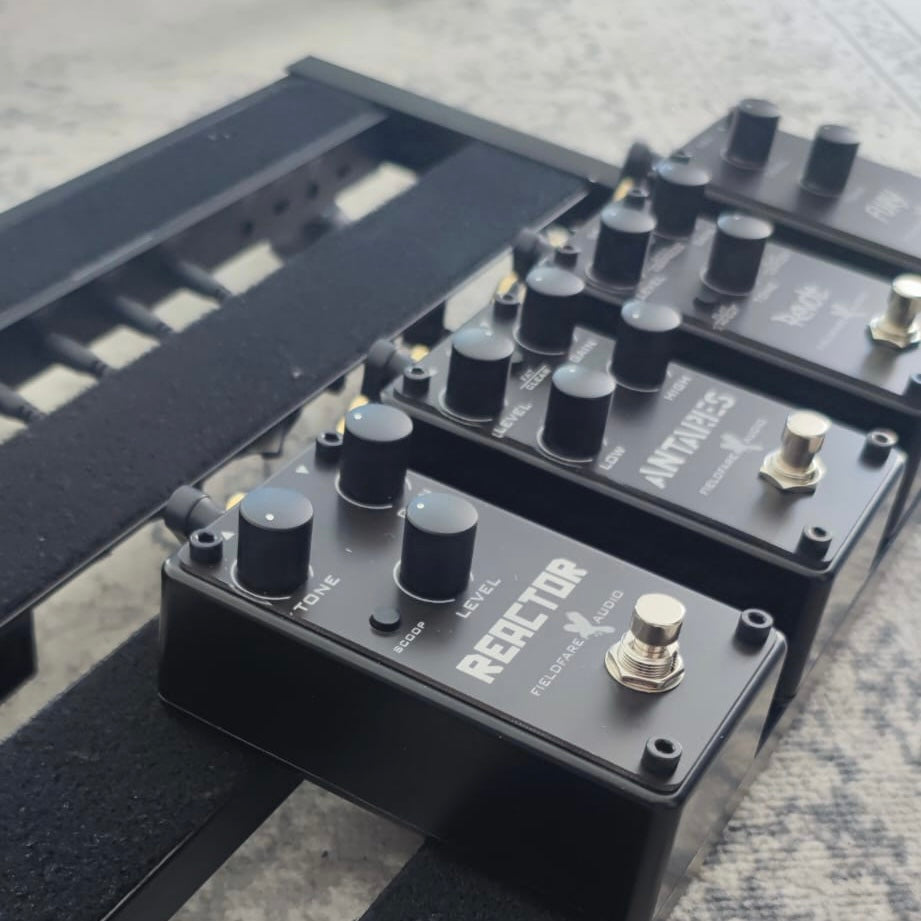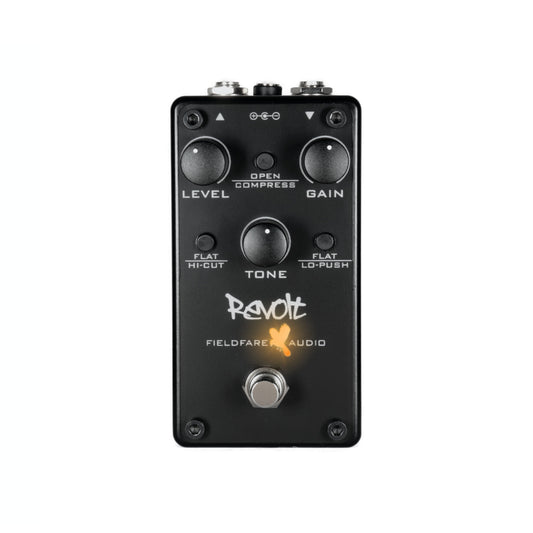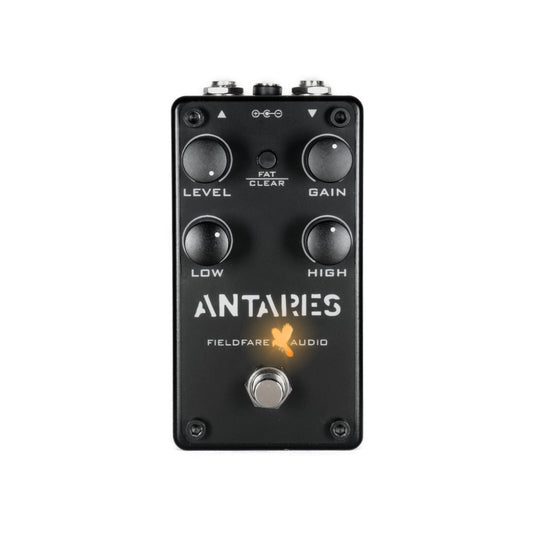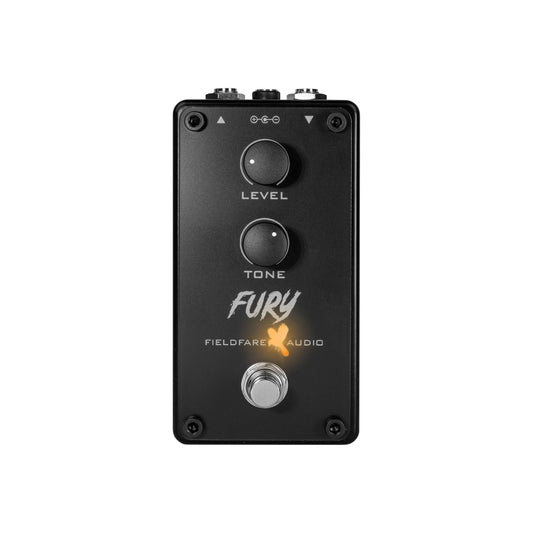
Overdrive pedal or boutique overdrive pedal
Share
Introduction: A brief overview of the importance of overdrive effect pedals, Overdrive Pedal Test.
In the seemingly endless world of effects pedals, overdrive pedals play a crucial role. In this blog post, we'll explore the world of overdrive pedals, from their basic function to the subtleties that make the difference between a "mass" overdrive pedal and a boutique overdrive.
An overdrive, with its various settings, is intended, as the name suggests, to create the sound of an overdriven guitar amp. It adds a rather gentle distortion (of course, even to the point of brutal distortion), making the sound lively and dynamic. Whether an overdrive is suitable for metal or an overdrive for blues often depends on the characteristics of the pedal and its settings.
What is an overdrive guitar effect pedal?: An explanation of what overdrive effect pedals are, how they work, and what distinguishes them from other types of effect pedals.
An overdrive effect is created by electronically overdriving the guitar's output signal, creating harmonic distortion. There are few limits to the type and complexity of distortion. Essentially, overdrive pedals create the characteristic sound of a guitar amplifier that saturates at higher volumes. This effect adds a pleasant warmth to the tone.
Differentiation from other effect pedals to, for example, a boutique overdrive, but without the corresponding overdrive pedal recommendation:
Distortion vs. Overdrive:
While a distortion pedal heavily distorts the guitar's sound and is often preferred for heavier genres like metal, an overdrive pedal with adjustable settings delivers a gentler distortion. Overdrives are more sensitive to the guitarist's attack and more likely to preserve the dynamics of the playing.
Fuzz vs. Overdrive:
Fuzz pedals produce an extremely distorted, often synthetic-sounding output. In comparison, an overdrive effect pedal remains more natural and preserves the characteristics of the guitar sound, which is especially beneficial for styles like blues and rock.
The role of overdrive effects in sound design:
Overdrive pedals not only distort the sound, but also add character and depth. They're great for adding a distorted sound to a clean amp.
Sound versatility:
Another advantage of boutique overdrives, for example, is their versatility. From overdrive for blues to overdrive for metal and rock, these pedals adapt to different genres depending on the characteristics of their setup, allowing the guitarist to shape their sound individually.
The History of the Overdrive Effect: A summary of the origins of overdrive pedals and how they have evolved over time.
The origins of the overdrive effect can be traced back to classic tube amplifiers. In the 1950s and 1960s, guitarists experimented with pushing their tube amplifiers to their saturation limit to achieve the characteristic saturation of the tubes.
The path to overdrive pedals as we know them today began in the 1960s with the introduction of the Maestro FZ-1. Developed by Gibson, it allowed musicians to activate the overdrive with a switch.
The 1970s saw the birth of the legendary Ibanez Tubescreamers like the TS8 and TS9, which became some of the most famous and widely copied overdrive pedals. In fact, we even developed our own Tubescreamer, the Revolt.
After a digital boom in the 1980s, boutique effects pedals, including boutique overdrives, have actually experienced a small renaissance in recent years. Handcrafted, high-quality boutique overdrives, rather than mass-produced items. We've also made this our mission with our effects pedals.
The main types of overdrive effects pedals: An introduction to the types of overdrive effects pedals, such as Tubescreamer, Blues Driver and Klon-Centaur.
Overdrive pedals come in a wide variety of shapes, colors, and characteristics. As is often the case, there are a number of adjustments to an overdrive pedal. We'd like to describe a few of them below:
Tubescreamer
The Tubescreamer, first developed by Ibanez, is a cornerstone of the overdrive world. Known for its gentle distortion, the Tubescreamer is primarily used to "push" a guitar amp, for example. Its mid-range emphasis makes it particularly well-suited for blues and rock sounds.
Blues Driver
The Blues Driver, developed by Boss, is designed to create blues and vintage tube amp sounds. It produces everything from mild and warm overdrive to heavy distortion.
Clone Centaur
The Klon Centaur Overdrive is a handcrafted boutique overdrive that has achieved cult status due to its unique sound signature and transparent distortion.
Boutique Overdrive like our Antares
Boutique effects pedals like our Overdrive are often handcrafted, which still demonstrates true craftsmanship. Each pedal is unique and has its own unique character paired with modern technology.
Conclusion: A summary of the most important points of the blog article about overdrive pedals.
In this blog post, we have taken a journey through the world of overdrive effect pedals, from their history to the different types that have shaped the effect pedal landscape not only in Germany.
Tubescreamer, Blues Driver, or Boutique Overdrive—each type of overdrive pedal has its own personality and is suited to different styles and genres. So you can always choose the right tool for your sound and pedalboard.
Boutique effects pedals stand out for their handcrafted precision, unique character, and creative innovation. These small, one-of-a-kind pieces offer not only a unique sound but also a sophisticated look that sets them apart from mass-produced products.




